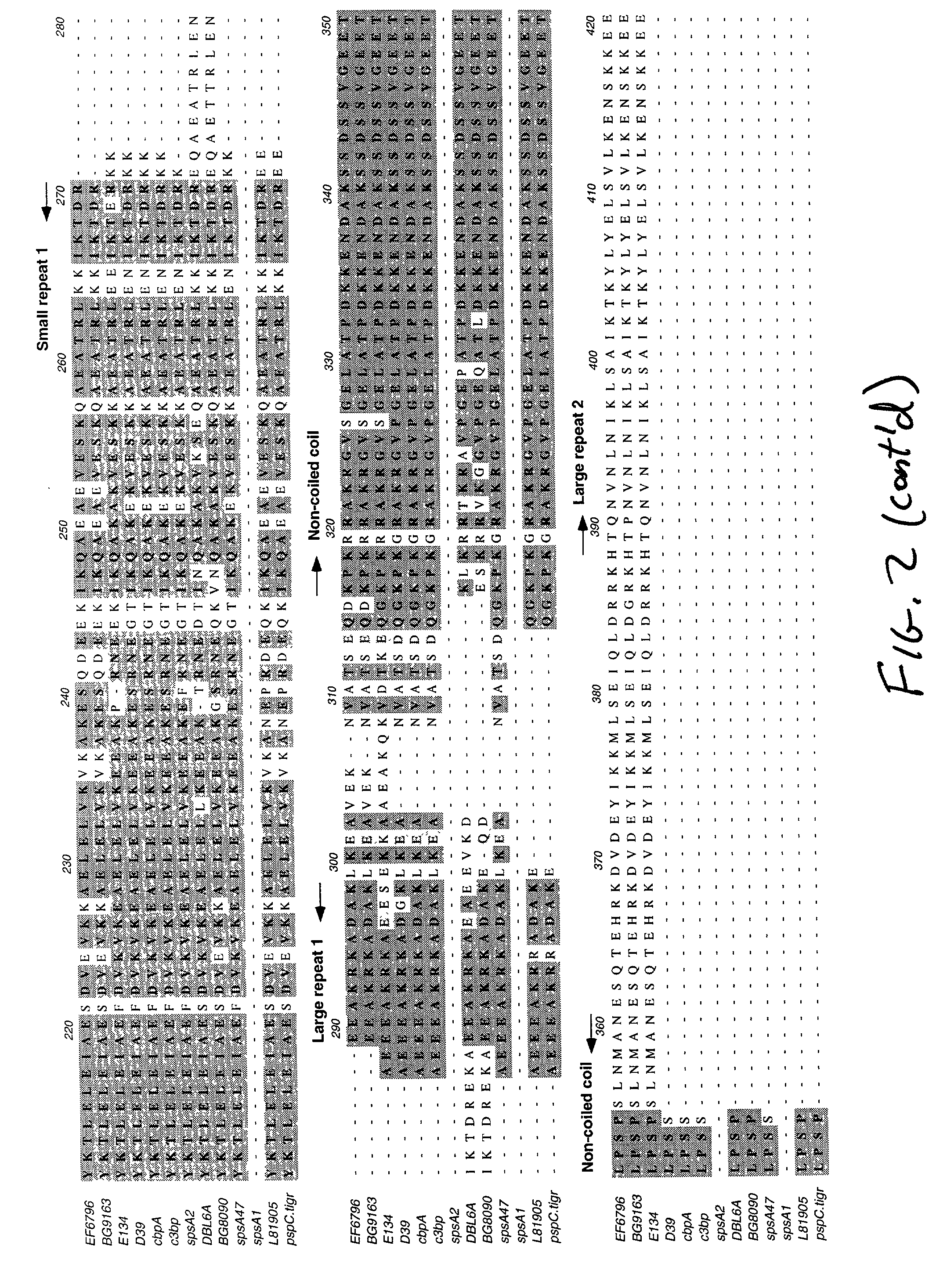Pneumococcal surface protein c (PSPC), epitopic regions and strain selection thereof, and uses therefor
a technology of surface protein and pneumococcal, applied in the field of pneumococcal surface protein c (pspc), can solve the problems of difficult approach, neonates and young children failing to make adequate immune responses to most, etc., and achieves the effect of enhancing immunogenicity and enhancing immunogenicity
- Summary
- Abstract
- Description
- Claims
- Application Information
AI Technical Summary
Benefits of technology
Problems solved by technology
Method used
Image
Examples
example /
Example / Result 9
Modular Evolution and Chimeric Structure of PspC
[0125] PspC is a chimeric protein, which has acquired domains from both interspecies and intraspecies genetic exchanges. The protein contains a signal sequence has 75% nucleotide identity to the bac gene from group B streptococci (accession numbers X59771 and X58470) (Hammerschmidt et al. 1997). The bac gene encodes the b antigen of Group B streptococci, a cell surface receptor that binds the constant region of human IgA. This similar sequence in the signal peptide region suggests that potential interspecies genetic exchange between group B streptococci and S. pneumoniae may have formed a chimeric locus including the bac regulatory region and a partial pspA or a pspA-like locus to create an ancestral gene for pspC. The origin of the central region specific to the current pspC genes is unknown. The direct amino acid repeats of the alpha-helix suggest that this region of PspC has evolved by a domain duplication event. Thi...
PUM
| Property | Measurement | Unit |
|---|---|---|
| Length | aaaaa | aaaaa |
| Immunogenicity | aaaaa | aaaaa |
Abstract
Description
Claims
Application Information
 Login to View More
Login to View More - R&D
- Intellectual Property
- Life Sciences
- Materials
- Tech Scout
- Unparalleled Data Quality
- Higher Quality Content
- 60% Fewer Hallucinations
Browse by: Latest US Patents, China's latest patents, Technical Efficacy Thesaurus, Application Domain, Technology Topic, Popular Technical Reports.
© 2025 PatSnap. All rights reserved.Legal|Privacy policy|Modern Slavery Act Transparency Statement|Sitemap|About US| Contact US: help@patsnap.com



